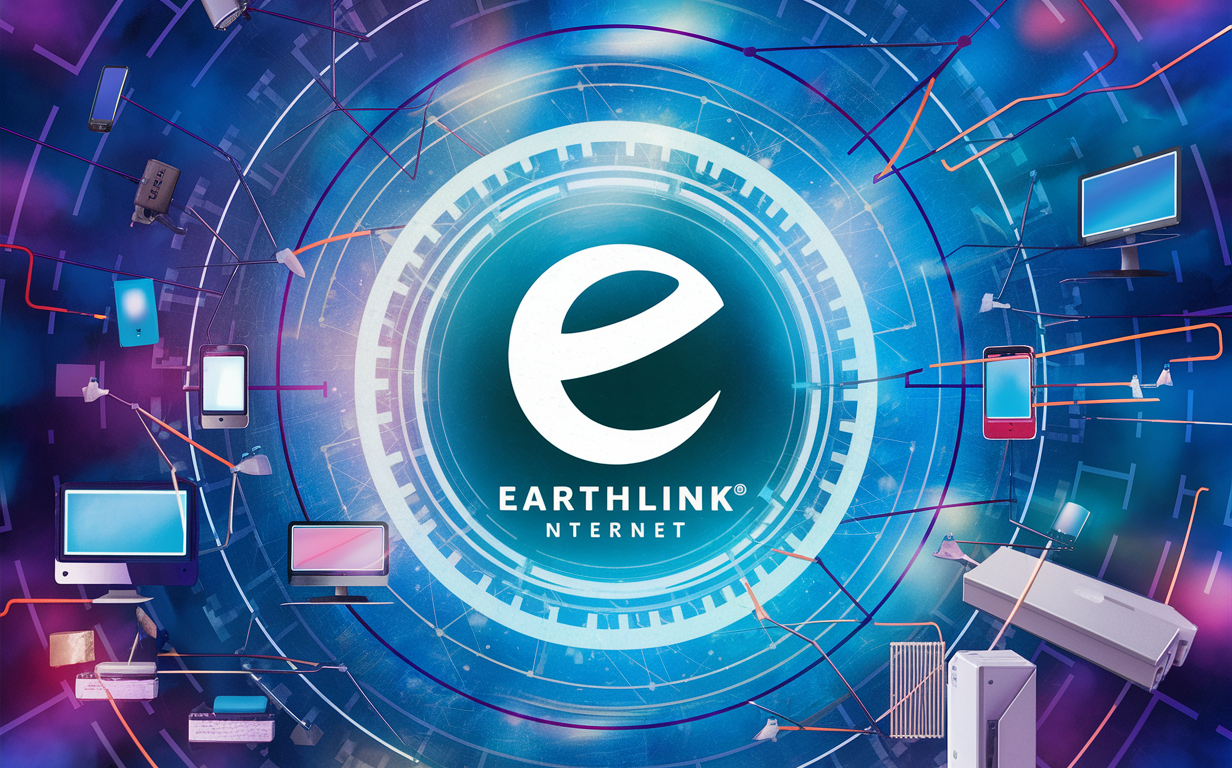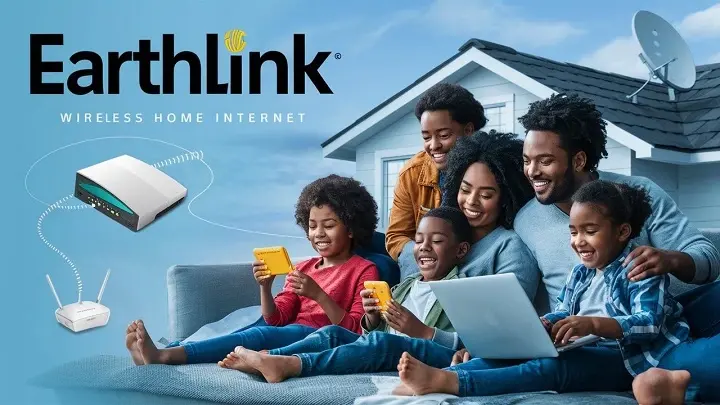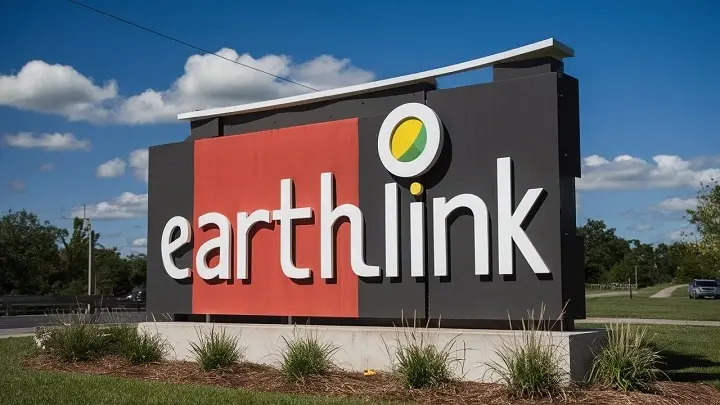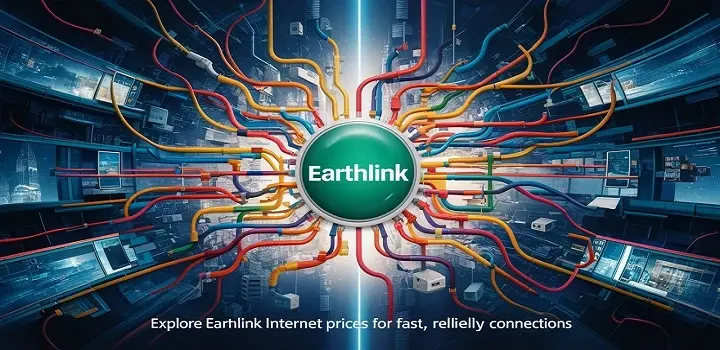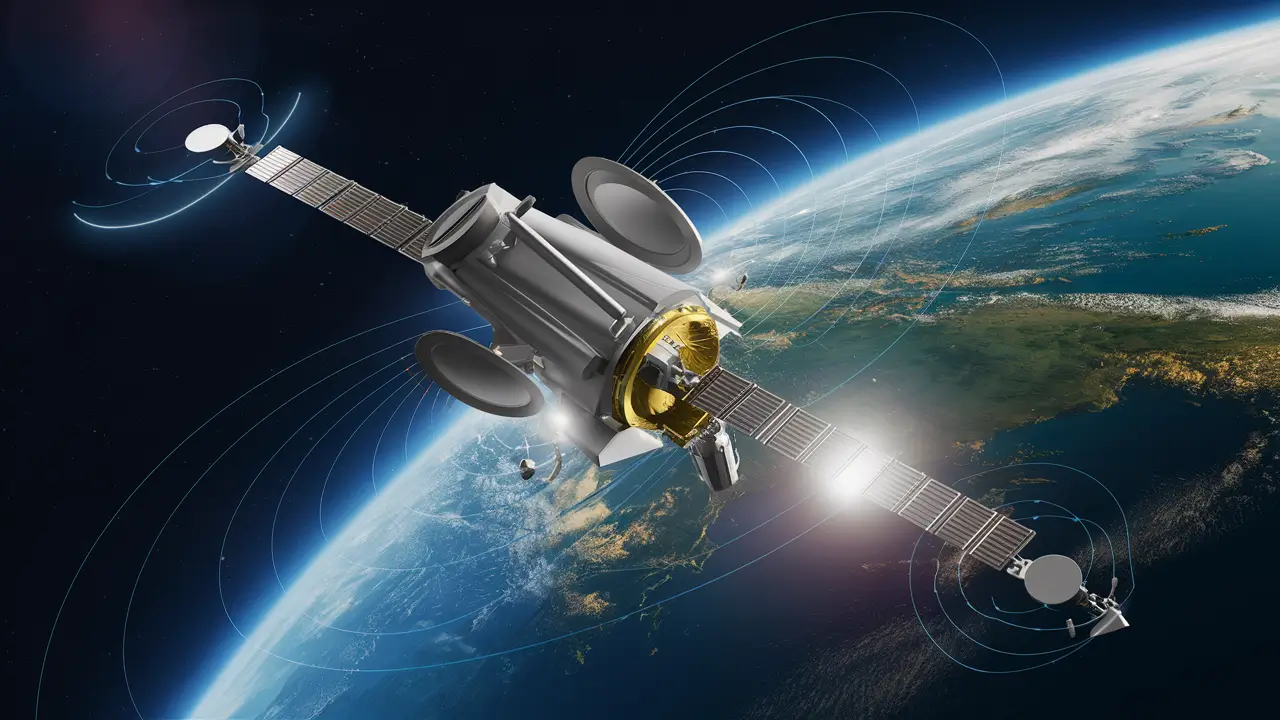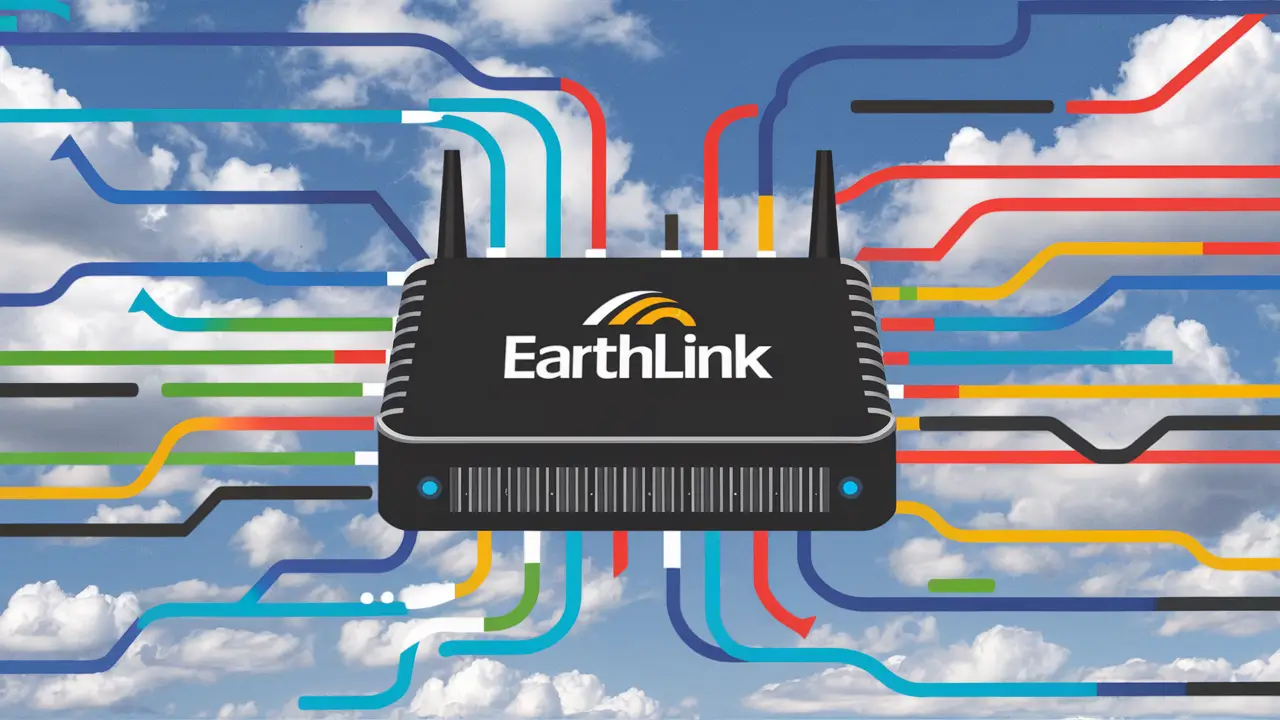How Reliable Is Earthlink Internet?
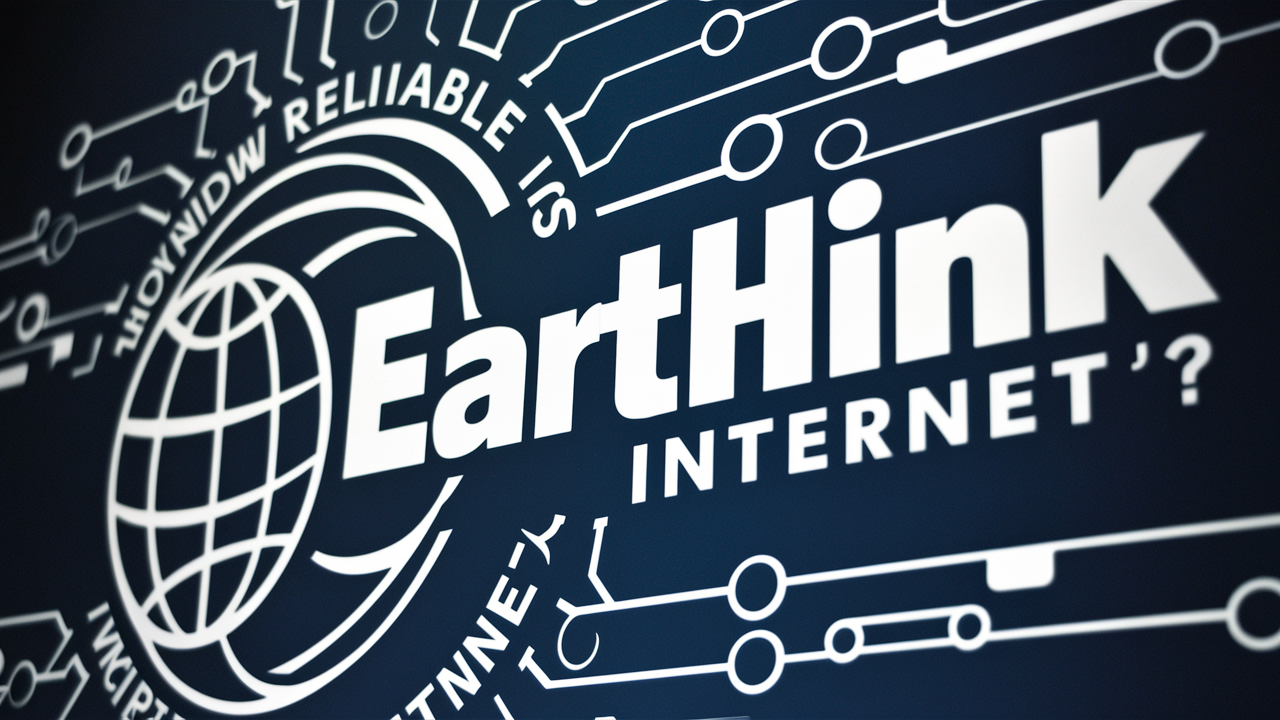
Is EarthLink internet a reliable choice for your home or business in 2025? This comprehensive guide dives deep into EarthLink's service reliability, exploring its technologies, customer feedback, and what to expect regarding uptime, speed consistency, and overall performance.
Introduction: Understanding EarthLink's Reliability
In the quest for a dependable internet connection in 2025, consumers are increasingly scrutinizing providers. EarthLink, a company with a long history in the internet service provider (ISP) market, offers a diverse range of technologies, from high-speed fiber to more traditional DSL and satellite options. This article aims to provide a comprehensive, data-driven analysis of "How Reliable Is EarthLink Internet?" by examining its technological underpinnings, customer feedback, performance metrics, and competitive positioning. We will equip you with the insights needed to make an informed decision about whether EarthLink meets your specific connectivity needs.
EarthLink's Technology Landscape: A Foundation for Reliability
EarthLink's reliability is intrinsically linked to the underlying technologies it employs. Unlike some providers who focus on a single connection type, EarthLink offers a spectrum of services, each with its own inherent strengths and weaknesses concerning stability and performance. Understanding these technologies is crucial to grasping the nuances of EarthLink's overall reliability.
Fiber Optic Internet
Fiber optic internet is widely considered the gold standard for reliability and speed. It transmits data using light signals through thin strands of glass or plastic. This technology is inherently resistant to electromagnetic interference, a common cause of instability in other forms of internet service. Fiber lines are also less susceptible to degradation from environmental factors like moisture and temperature fluctuations compared to copper cables. When available, EarthLink's fiber offerings typically boast the highest uptime percentages and the most consistent speeds. However, fiber deployment is costly and complex, meaning it's not universally available, often limited to more densely populated urban and suburban areas. The infrastructure itself, once laid, is robust and requires less frequent physical maintenance than older cable or copper networks.
DSL Internet
Digital Subscriber Line (DSL) internet utilizes existing copper telephone lines to transmit data. While it offers a significant upgrade over dial-up, DSL's reliability and speed are heavily dependent on the distance from the user's home or business to the local telephone company's central office (CO). The further the distance, the weaker the signal, leading to slower speeds and potentially more connection drops. Factors like the quality of the copper wiring, both in the ground and within the building, also play a significant role. In 2025, DSL is often a fallback option for areas where fiber or cable is not yet available. Its reliability can be moderate, with potential for occasional slowdowns during peak usage hours or due to line degradation. EarthLink's DSL service reliability will vary considerably based on these geographical and infrastructural factors.
Fixed Wireless Internet
Fixed wireless internet uses radio waves to connect a fixed location (like a home or business) to a central access point, often located on a tower or tall building. This technology is a viable alternative in areas where wired infrastructure is scarce. Its reliability can be quite good, but it is more susceptible to environmental factors than wired connections. For instance, heavy rain, snow, or dense foliage can obstruct or weaken the signal, leading to intermittent connectivity or reduced speeds. Line-of-sight between the user's antenna and the access point is critical. EarthLink's fixed wireless reliability is generally considered stable under optimal conditions, but users in areas with frequent severe weather or significant obstructions might experience more variability.
Satellite Internet
Satellite internet, particularly traditional geostationary satellite services, has historically been the least reliable option for consistent, high-performance internet. It involves a dish on the user's property communicating with a satellite in orbit, which then relays data to a ground station. The significant distance involved introduces high latency, which impacts real-time applications like video conferencing and online gaming. Furthermore, satellite signals are highly susceptible to weather conditions; heavy clouds, rain, and snow can severely disrupt service. While newer low-Earth orbit (LEO) satellite constellations, like Starlink, are improving latency and speeds, EarthLink's traditional satellite offerings in 2025 may still present reliability challenges. It remains a crucial service for extremely remote locations where no other options exist, but users must temper expectations regarding consistent uptime and performance.
Key Reliability Metrics: What to Look For
When evaluating the reliability of any internet service, including EarthLink, several key metrics are essential. These indicators provide a quantitative and qualitative understanding of how consistently and effectively the service performs.
Uptime Guarantees
Uptime refers to the percentage of time a service is operational and accessible. Most ISPs, including EarthLink, aim for very high uptime, often expressed as a percentage (e.g., 99.9%). While many providers don't explicitly offer Service Level Agreements (SLAs) with financial penalties for residential customers, their stated uptime is a good indicator of expected performance. For business plans, SLAs are more common and crucial. A 99.9% uptime means approximately 8.76 hours of downtime per year, while 99.99% allows for only about 52.6 minutes of downtime annually. Higher uptime percentages generally translate to a more reliable connection.
Speed Consistency
Reliability isn't just about staying connected; it's also about maintaining expected performance levels. Speed consistency refers to how closely the actual download and upload speeds match the advertised speeds, and how stable those speeds are over time. Fluctuations in speed, especially during peak hours, can significantly impact user experience, making streaming buffer or downloads take longer. Providers that invest in network infrastructure and capacity management tend to offer more consistent speeds. For EarthLink, this consistency will vary by technology and location.
Latency and Jitter
Latency, often referred to as "ping," is the time it takes for data to travel from your device to a server and back. High latency leads to lag in online activities. Jitter is the variation in latency over time. Both high latency and high jitter can make real-time applications like video calls, online gaming, and VoIP services unusable, even if the connection is technically "up." Fiber optic connections typically offer the lowest latency and jitter, making them the most reliable for these sensitive applications. DSL can have moderate latency, while satellite internet generally suffers from the highest latency due to the vast distances involved.
Customer Support Responsiveness
While not a direct measure of network uptime, the quality and responsiveness of customer support are critical components of overall service reliability. When issues do arise, how quickly and effectively EarthLink's support team can diagnose and resolve problems directly impacts the user's perceived reliability. This includes the ease of contacting support, the technical expertise of the agents, and the efficiency of dispatching technicians when necessary. Positive customer support experiences can mitigate the impact of minor outages or performance issues.
EarthLink Reliability in 2025: A Deep Dive
Analyzing EarthLink's reliability in 2025 requires a granular look at each technology it offers, considering current infrastructure, network management practices, and reported user experiences.
Fiber Reliability Analysis
Where EarthLink offers fiber optic internet, its reliability is expected to be exceptionally high. Fiber networks are less prone to physical damage and electromagnetic interference than older technologies. In 2025, EarthLink's fiber deployments are likely built on modern infrastructure, benefiting from ongoing upgrades and maintenance. Uptime for fiber is typically in the 99.9% to 99.999% range. Speed consistency is also a major advantage, with users experiencing speeds close to advertised rates consistently. Latency is remarkably low, making it ideal for demanding online activities. The primary limitation remains availability; EarthLink fiber is not a nationwide solution.
DSL Reliability Analysis
EarthLink's DSL service reliability in 2025 will continue to be a mixed bag, heavily dependent on the quality and proximity of the local telephone infrastructure. In areas with well-maintained, close-proximity telephone exchanges, DSL can be quite stable, offering moderate uptime (e.g., 99.5% to 99.8%). However, in more remote or older areas, signal degradation over distance can lead to more frequent slowdowns and occasional disconnections. Speed consistency can be an issue, especially during peak usage times when network congestion on shared copper lines can occur. Latency is generally higher than fiber but often acceptable for general browsing and streaming. For users with no other wired options, EarthLink DSL can be a reliable, albeit slower, choice.
Fixed Wireless Reliability Analysis
The reliability of EarthLink's fixed wireless service in 2025 is largely dictated by its deployment environment. In areas with clear line-of-sight and minimal weather interference, fixed wireless can offer good reliability, comparable to DSL or even entry-level cable in terms of uptime (e.g., 99.6% to 99.8%). However, its susceptibility to atmospheric conditions means that regions prone to frequent heavy storms, fog, or snow might experience more intermittent service. Signal obstruction by trees or new construction can also impact performance. Speed consistency can be affected by network load at the access point and atmospheric conditions. Latency is typically better than satellite but can be higher than DSL or fiber.
Satellite Reliability Analysis
EarthLink's traditional satellite internet service (likely using geostationary satellites) continues to face inherent reliability challenges in 2025. While it provides a vital link to extremely rural areas, users should anticipate more frequent and longer outages, especially during inclement weather. Uptime might hover around 98% to 99% in optimal conditions, but this can drop significantly during storms. Speed consistency is also a concern, with significant variability possible. High latency (often 600ms or more) makes real-time applications problematic. While EarthLink may offer newer satellite options or partner with providers like Viasat, the fundamental physics of satellite communication mean it remains the least reliable option among EarthLink's portfolio for users with alternatives.
Customer Experiences and Reviews: The Real Story
Beyond technical specifications, real-world customer experiences offer invaluable insights into EarthLink's reliability. Analyzing reviews and feedback from 2025 provides a grounded perspective.
Positive Feedback Trends
Customers who have access to EarthLink's fiber optic service often report high satisfaction with its speed, consistency, and reliability. Many praise the seamless streaming, fast downloads, and stable connections for remote work and online learning. Positive feedback also frequently highlights EarthLink's efforts to serve rural and underserved areas with fixed wireless and DSL options, providing connectivity where other providers do not. Some users appreciate the company's long-standing presence and perceived stability compared to newer, more volatile ISPs. Customer support, when effective, is also a common point of praise, with some users noting prompt technician visits and successful issue resolution.
Common Complaints and Concerns
The most frequent complaints regarding EarthLink's reliability often stem from its non-fiber offerings. Customers using DSL report issues with slow speeds, especially during peak hours, and occasional connection drops, often attributed to the limitations of copper infrastructure. Fixed wireless users sometimes mention service disruptions due to weather or signal obstructions. Satellite internet customers are the most likely to report significant issues with latency, speed variability, and outages during bad weather. Billing disputes, difficulties reaching customer support, and long wait times for technician appointments are also recurring themes in negative reviews across all service types. The perceived unreliability is often exacerbated by contractual obligations that make switching difficult.
Geographic Variations in Reliability
It is crucial to understand that EarthLink's reliability is not uniform across the country. The availability of specific technologies plays the most significant role. In areas where EarthLink has invested in fiber infrastructure, reliability is generally excellent. Conversely, in regions where only DSL or satellite is available, customers are more likely to encounter reliability issues inherent to those technologies. Rural areas served by fixed wireless might experience more variability than suburban areas with robust tower infrastructure. Therefore, a customer's experience with EarthLink's reliability is highly localized and dependent on the specific service technology deployed in their neighborhood.
Comparing EarthLink's Reliability to Competitors
To fully assess EarthLink's reliability, it's essential to place it in the context of the broader ISP market in 2025.
EarthLink vs. Major National Providers (e.g., Xfinity, Spectrum)
Major cable providers like Xfinity and Spectrum generally offer high-speed cable internet, which is typically more reliable and faster than DSL or satellite. Their cable networks are often more extensive and may have undergone more recent upgrades than older copper telephone lines. Compared to EarthLink's fiber, these providers' cable offerings might be comparable in reliability but usually fall short in terms of speed consistency and latency. However, compared to EarthLink's DSL and satellite, Xfinity and Spectrum generally offer a more stable and faster connection where available. EarthLink's advantage lies in its reach into areas where these national giants might not operate or offer their best services.
EarthLink vs. Other Regional Providers
The reliability of regional ISPs varies greatly. Some regional providers might specialize in fiber deployment within their service areas, offering reliability on par with or exceeding EarthLink's fiber. Others might focus on fixed wireless or DSL, making direct comparisons with EarthLink's similar offerings necessary. Often, regional providers have a better understanding of local infrastructure and customer needs, which can translate to better service and support. However, EarthLink's established network and broader operational experience can be an advantage in some markets.
EarthLink vs. Emerging Technologies (e.g., Starlink)
When comparing EarthLink's satellite offerings to emerging LEO satellite services like Starlink, there's a significant difference. Starlink, in 2025, generally offers much lower latency and higher speeds than traditional geostationary satellite internet, making it a more reliable option for a wider range of online activities. While EarthLink might partner with or offer services similar to Viasat, which competes directly with Starlink, the underlying technology of traditional satellite is inherently less reliable than fiber or even robust cable/fixed wireless. For users in remote areas, Starlink is often considered a more reliable and performant alternative to traditional satellite, though its own reliability can still be impacted by network congestion and infrastructure build-out.
Factors Impacting EarthLink Reliability
Several external and internal factors can influence the reliability of EarthLink's internet service, regardless of the technology used.
Infrastructure Quality
The physical condition of the network infrastructure is paramount. For DSL, this means the state of copper phone lines. For fiber, it's the integrity of the fiber optic cables. For fixed wireless, it's the stability of transmission towers and antennas. Aging or poorly maintained infrastructure is a common cause of intermittent service, slowdowns, and outages. EarthLink's investment in maintaining and upgrading its infrastructure directly correlates with its service reliability in any given area.
Network Maintenance and Upgrades
Proactive network maintenance and timely upgrades are essential for sustained reliability. Scheduled maintenance can sometimes lead to brief, planned outages, but it prevents larger, unplanned disruptions. Investing in network capacity upgrades helps prevent congestion during peak hours, ensuring consistent speeds and performance. EarthLink's commitment to these operational aspects directly impacts how reliable its service remains over time.
Weather Conditions
As discussed, weather significantly impacts fixed wireless and satellite internet. Heavy rain, snowstorms, high winds, and even extreme heat can degrade or disrupt signals. While fiber and DSL are largely immune to weather, extreme conditions can sometimes cause physical damage to buried or aerial cables, leading to outages. Users in areas with frequent severe weather should carefully consider the technology offered by EarthLink and its susceptibility to these conditions.
Local Network Congestion
Even with robust infrastructure, network congestion can occur when too many users in a specific area are online simultaneously, exceeding the available bandwidth. This is more common with shared technologies like DSL and cable, and can lead to slowdowns and reduced performance. EarthLink's network management strategies, including capacity planning and traffic shaping, play a crucial role in mitigating congestion and maintaining reliability during peak usage times.
Making the Right Choice for You: Is EarthLink Reliable Enough?
Deciding if EarthLink is reliable enough for your needs involves a personal assessment and due diligence.
Assessing Your Needs
First, determine what "reliable" means to you. If you primarily browse the web and check email, DSL might suffice. If you work from home, require stable video conferencing, or enjoy online gaming, you'll need a more robust connection like fiber or high-quality fixed wireless. Streaming multiple HD or 4K videos simultaneously demands consistent, high bandwidth. Understanding your daily internet usage patterns is the first step to evaluating any ISP's reliability against your requirements.
Checking Availability in Your Area
The most critical step is to check EarthLink's service availability at your specific address. Use their online tools or contact customer service to see which technologies (fiber, DSL, fixed wireless, satellite) are offered. This will immediately narrow down the potential reliability of EarthLink for your location. If fiber is available, it's likely to be highly reliable. If only DSL or satellite is an option, you'll need to weigh the pros and cons more carefully.
Understanding Contract Terms
Before signing up, thoroughly review EarthLink's contract terms. Pay close attention to data caps, equipment rental fees, early termination penalties, and any Service Level Agreements (SLAs), especially for business plans. Understanding these terms will help you avoid surprises and ensure you're aware of any limitations or potential costs associated with the service. A long-term contract with a less-than-reliable service can be a costly mistake.
Conclusion: Final Verdict on EarthLink Reliability
In 2025, EarthLink's reliability is a nuanced picture heavily dependent on the technology available at your specific location. For those fortunate enough to have access to EarthLink's fiber optic internet, the service offers exceptional reliability, characterized by high uptime, consistent speeds, and low latency, rivaling the best in the industry. However, fiber availability remains limited. For users in areas where EarthLink primarily offers DSL or fixed wireless, reliability can be moderate to good, provided the local infrastructure is well-maintained and environmental conditions are favorable. These options can be reliable choices for general internet use, but may not meet the demands of heavy users or real-time applications consistently. EarthLink's satellite internet, while crucial for connecting the most remote areas, generally presents the most significant reliability challenges due to inherent technological limitations, particularly concerning latency and weather sensitivity. When comparing EarthLink to competitors, its fiber offerings stand out, while its DSL and satellite services face competition from more advanced technologies and providers. Ultimately, to determine "How Reliable Is EarthLink Internet?" for you, thorough research into local availability, understanding the specific technology offered, and consulting recent customer reviews for your area are indispensable steps. EarthLink can be a reliable provider, but its performance is intrinsically tied to the infrastructure it leverages in your community.
